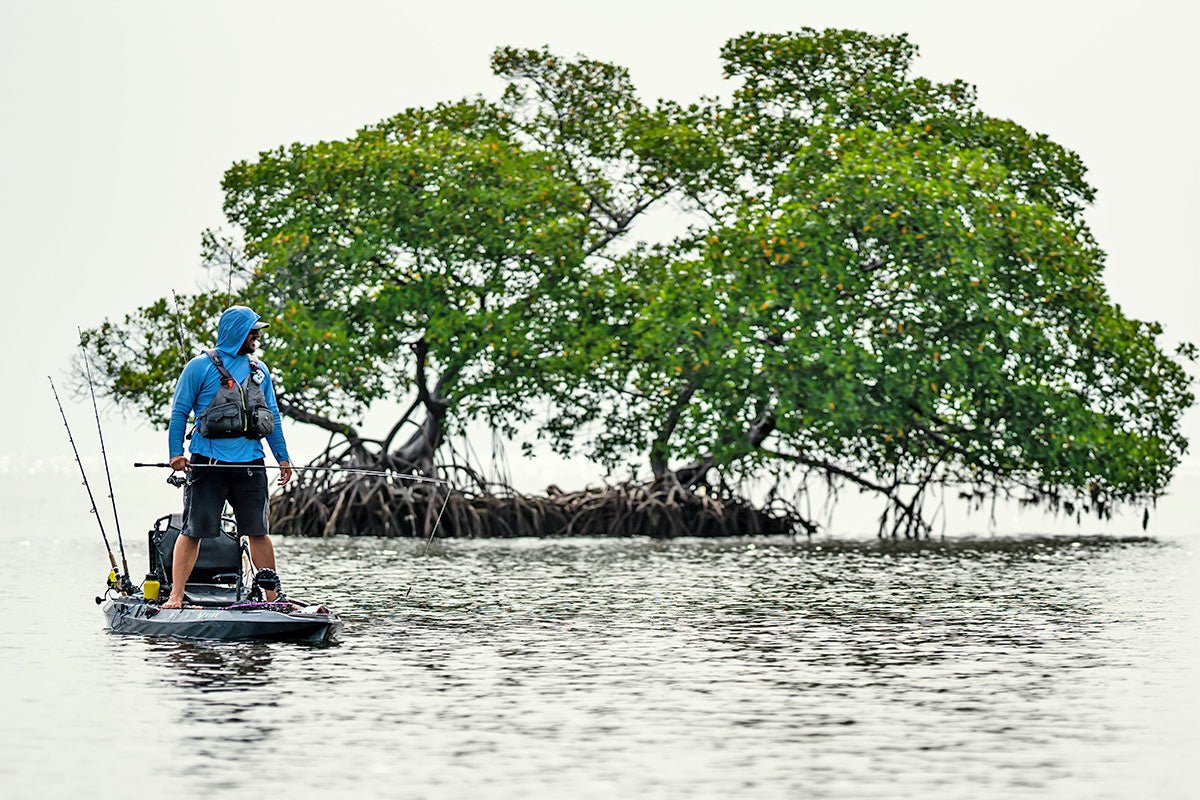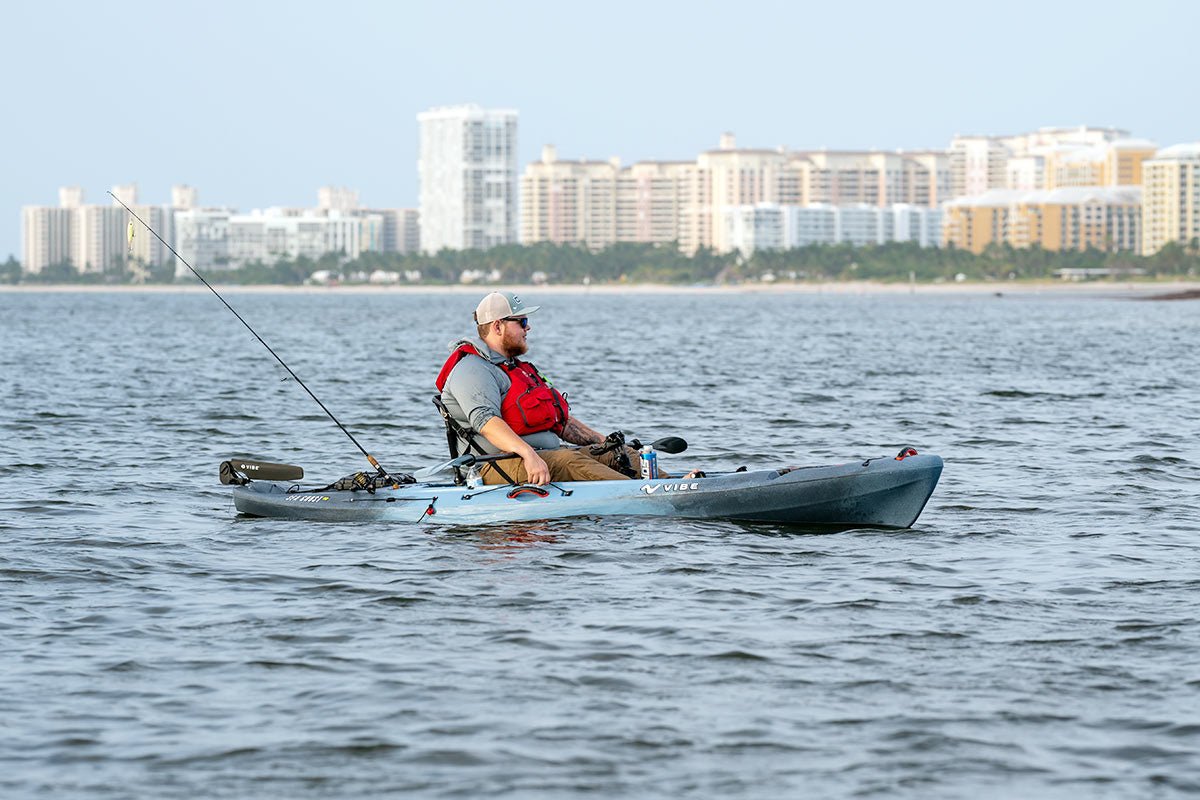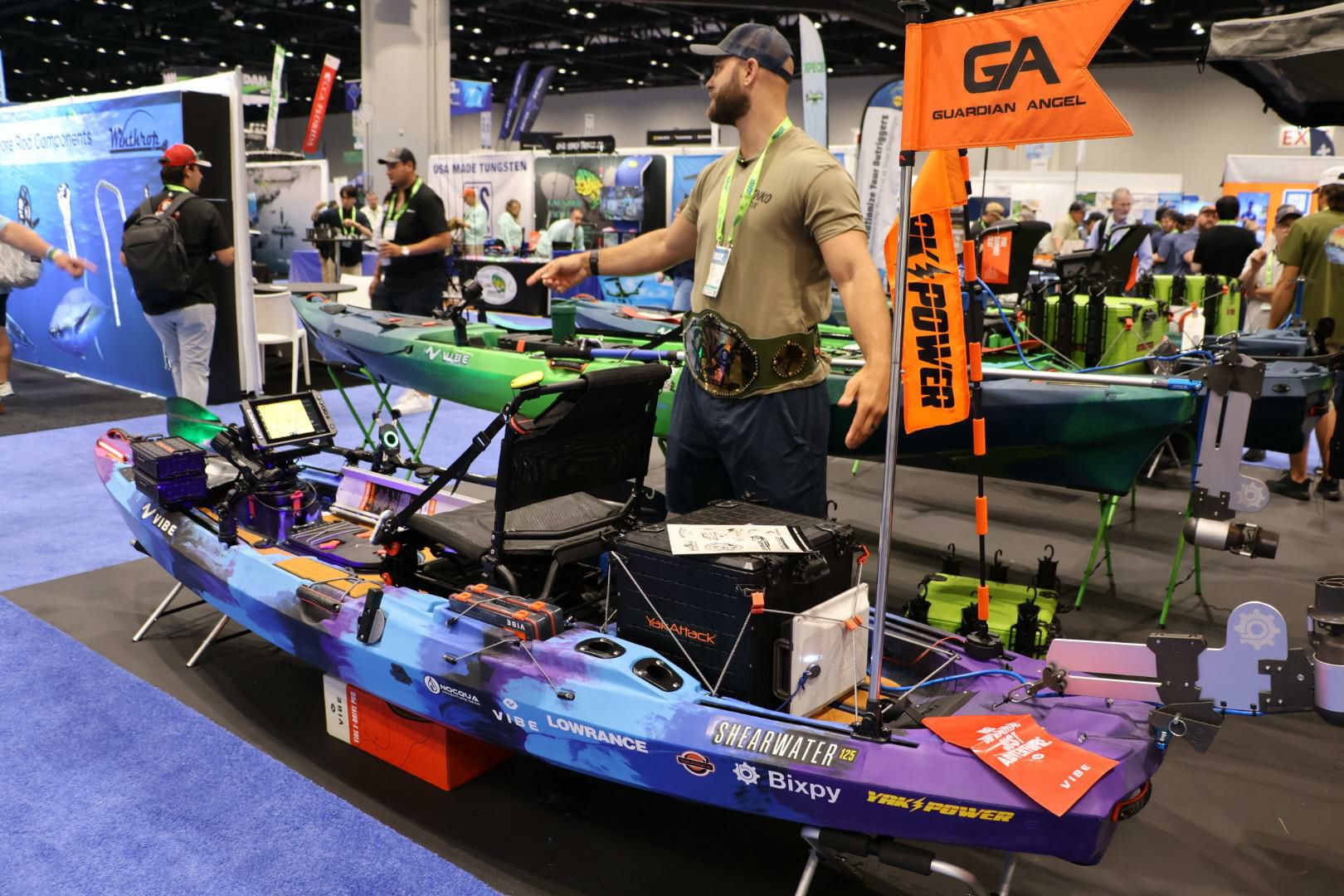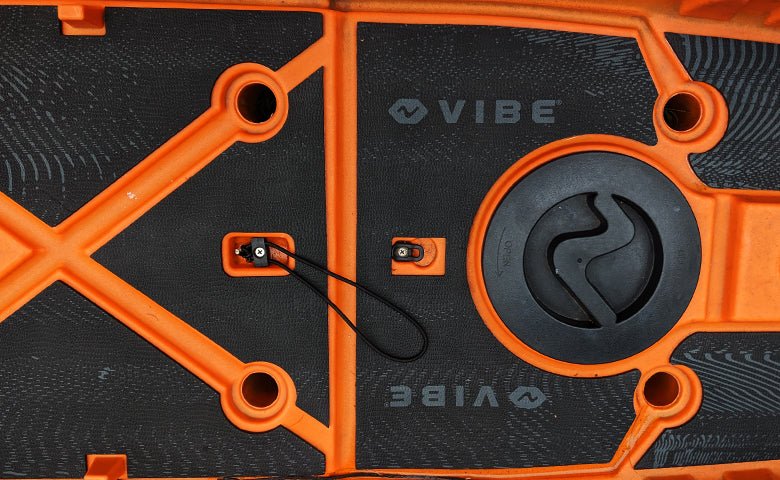How to Master Kayak Angling: Advanced Techniques

Kayak fishing is way more fun than traditional bank or boat fishing, but to max out the fun-factor, you really need to master the skills, tips and tricks to become a better kayak angler - from knowing how to use eddies to access under-fished waters, to using crankbaits and chatterbaits to learning to position your kayak like a pro.
We've listed seven more advanced skills below to help you become a better kayak angler, because kayak fishing requires different approaches than angling from a boat; you’re closer to the water, slightly less stable, sitting down, and more at the mercy of the wind and current.
If you haven't read Vibe's "7 Basic Skills to Master to Become a Better Kayak Angler" then you may want to start there first.
Learn to flip cast
The fastest way to find fish is to look around and under structures that extend over the water’s edge - be it on a lake, river or ocean. But getting your lure under or near these structures (or under tree limbs if you are on a stream) is tough under the best conditions if you use your traditional cast. Flipping, shooting, or pitching are all names for the same basic technique of turning your rod into a slingshot. Drop roughly 18” – 24” of line from the end of your rod, allowing it to dangle. Grab the lure with your free hand, and pull back to create a bent rod, while trying to aim for where you want to hit. With the bail open and tension applied to the line against the rod, release the lure causing it to shoot forward as if from a slingshot. Immediately, release the tension on your line and shoot your lure across the water. When doing the sling shot method, it helps to use a lightweight jig with soft plastic lure with a trailer or hair. These are easier to handle and will help you to get further under the cover. Also, using a short ultralight rod and spinning reel makes the whipping action smoother. Practice makes perfect.
Master the one-handed paddle
Just like the one-handed cast, efficient kayak angling requires skill in handling a paddle with one hand. Paddling a kayak is simple with two hands, but what do you do when you’re fighting a fish with one hand, and you’ve got to steer your kayak? Practice locking the shaft of your paddle along a forearm, which will anchor it along your arm and allow you to use it more like a canoe paddle.
Use your feet as rudders
It might seem odd, but experienced kayak anglers often use their feet as rudders to steer a kayak's drift on waterways, and they work as easy anchors when fishing near a log or shallow areas. Feet are also handy for redirecting the kayak off a stump or other obstacle while your hands are busy fighting a fish.
Cast to steer
Baits that offer resistance like crankbaits, spinnerbaits, and chatterbaits can actually be used to help steer the boat and position yourself. If you’re fishing a crankbait from a lightweight kayak, you’ll quickly realize that the simple resistance of reeling in the bait will actually pull your boat in the direction you’re casting. Use this as an advantage and make casts in specific directions to very subtly adjust your boat’s position.
Side note, a kayak's weight and the drag it has on the water will also affect how fast your lure will retrieve, so keep that in mind when you fish from different fishing kayaks.
Use an eddy
Currents can be helpful when kayak fishing rather than a nightmare to fish in a kayak if you know how to use it to your advantage. Many Vibe Kayaks are lightweight and short enough to sit entirely in an eddy which will prevent it from moving downstream and allow you time to fish the current seam. To maximize the opportunity, go past the spot that you want to fish, then move into the eddy behind the spot and you'll be able to fish for as long as you want – and not even have to paddle until you want to.
Anchor when you need to
Although a hassle sometimes, anchors most definitely have a place in your kayak fishing toolbox. This is very true in spots where it’s windy or in spots offshore where you want to stay and fish in one particular area. Usually a 2-4 pound claw anchor will work well for most fishing kayaks.
However, be very careful when trying to anchor in strong current, because it has the potential to push the whole kayak under water if things go wrong. Note, most fast river kayakers won't anchor at all, but if they do they will use a quick release on their anchors.
Hug a shoreline
When you're paddling up-current or when it's windy, it can take a lot of effort to get anywhere, much less fish. Much of this has to do with how much moving water your kayak is on. Instead of paddling down the middle of a lake or river, move into shallow water near the shoreline where there's less current and more vegetation to cut wind. You'll then be able to paddle much more efficiently, and you'll have more energy once you get to your fave fishing spot.
Learning to master your boat, and your casting will make you an expert kayak fisherman in no time, and as always finding what works best for you and your own style is going to be the biggest key. So get out there, practice and have fun. Before you know it you will be a pro.
Photo by: Matt Charette



